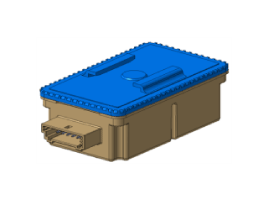 Hyundai Equus: TPMS Receiver Description and Operation
Second generation VI (2009–2025) / Hyundai Equus VI 2009-2025 Service Manual / Suspension System / Tire Pressure Monitoring System / TPMS Receiver Description and Operation
Hyundai Equus: TPMS Receiver Description and Operation
Second generation VI (2009–2025) / Hyundai Equus VI 2009-2025 Service Manual / Suspension System / Tire Pressure Monitoring System / TPMS Receiver Description and Operation
Second generation VI (2009–2025) / Hyundai Equus VI 2009-2025 Service Manual / Suspension System / Tire Pressure Monitoring System / TPMS Receiver Description and Operation
| Description |

| 1. |
Mode
|
| 2. |
Overview
|
| Operation |
| 1. |
General Function
|
| 2. |
General Conditions to Learn New Sensors:
|
| 3. |
General Conditions to Un-Learn a sensor that is removed:
|
 TPMS Sensor Repair procedures
TPMS Sensor Repair procedures
Removal
Tire Removal
1.
Deflate tire & remove balance weights.
•
The tire bead should be broken approx. 90° from the valve side of the wheel. The bead breaker sho ...
 TPMS Receiver Repair procedures
TPMS Receiver Repair procedures
Replacement
When the receiver first arrives for replacement:
1)
It will be in Virgin State.
2)
It will not have any sensor ID's memorized.
It ...
See also:
Trip A/B
✽ NOTICE
If you reset one of the tripmeter, elapsed time, and average vehicle speed,
they will be reset all together.
Tripmeter (1)
The tripmeter is the total driving distance since t ...
Owner maintenance
The following lists are vehicle checks and inspections that should be performed
by the owner or an authorized EQUUS dealer at the frequencies indicated to help
ensure safe, dependable operation of ...
Timing Chain Components and Components Location
Components
1. Timing chain upper cover2. Timing chain upper cover gasket3. CVVT assembly4. Camshaft5. Timing chain lower cover6. Timing chain lower cover gasket(#1)7. Timing chain lower cover gas ...
Categories
Hyundai Equus Manuals
© 2011-2025 Copyright www.heqmanual.com
